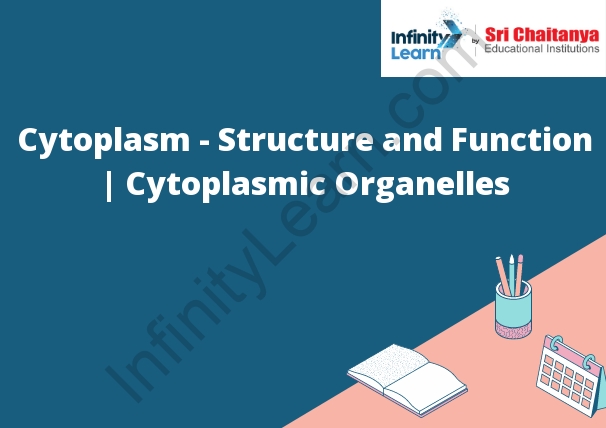Table of Contents
Cytoplasm
Cytoplasm is the material that fills the cells of living organisms. It is a complex mixture of proteins, lipids, carbohydrates, and nucleic acids. The cytoplasm is surrounded and supported by the cell membrane, and it contains the cell’s organelles, which carry out the cell’s functions.

Cytoplasm : Historical Background
Cytoplasm was discovered in the late 1800s by scientists who were studying cells under a microscope. At the time, they believed that the cell nucleus was the only important part of the cell, so they didn’t give much attention to the rest of the cell. However, they soon realized that the cytoplasm was actually very important, and it has been studied extensively ever since.
Cytoplasmic Organelles
Cytoplasmic organelles are tiny, specialized structures that are found inside cells. They are responsible for performing specific functions within the cell. Some of the most common cytoplasmic organelles include the nucleus, mitochondria, and ribosomes.
Endoplasmic Reticulum
The endoplasmic reticulum is a membranous organelle in the cytoplasm of cells. It is involved in the processing of proteins and lipids. The endoplasmic reticulum has two major subdivisions, the rough endoplasmic reticulum and the smooth endoplasmic reticulum. The rough endoplasmic reticulum is studded with ribosomes, which are involved in the synthesis of proteins. The smooth endoplasmic reticulum is not studded with ribosomes and is involved in the synthesis of lipids.
Protoplasm
is the living matter of a cell. It contains the cytoplasm and the nucleus. The cytoplasm is a gel-like substance that contains the cell’s organelles. The nucleus is a small, dense region in the center of the cytoplasm that contains the cell’s genetic material.
Golgi Complex
The Golgi complex is a membranous organelle found in the cytoplasm of eukaryotic cells. It is responsible for the processing and sorting of proteins and lipids that are secreted from the cell. The Golgi complex is made up of a series of stacked, flattened sacs called cisternae. The cisternae are connected to each other by small tubules. Proteins and lipids that are to be secreted from the cell are first processed and modified in the Golgi complex. The proteins are folded and sorted according to their function. The lipids are sorted according to their size and chemical properties. The Golgi complex then ships the proteins and lipids to their final destination within the cell or outside of the cell.
Lysosomes
are sac-like vesicles that are found in the cytoplasm of all eukaryotic cells. They are membrane-bound organelles that are filled with digestive enzymes.
Lysosomes are involved in the breakdown of large molecules, such as proteins, carbohydrates, and lipids, into smaller molecules that can be used by the cell. They also play a role in cell signaling and in the destruction of damaged cells.
Mitochondria
Mitochondria are organelles in the cytoplasm of a cell. They are responsible for the production of adenosine triphosphate (ATP), which provides energy for the cell. Mitochondria also play a role in cell signaling and programmed cell death.
Ribosomes
A ribosome is a microscopic particle that is found in all cells and is responsible for the production of proteins.
Microtubules Serve at Least Three Purposes:
1. They provide a scaffold for organizing the cell’s cytoplasm.
2. They help to move organelles around within the cell.
3. They play a role in cell division.
For more visit Cytoplasm – Structure and Function | Cytoplasmic Organelles









